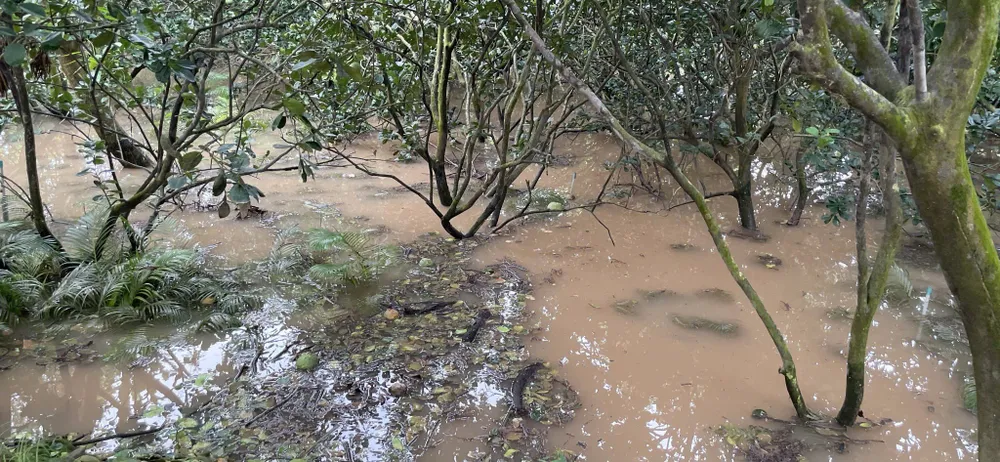
On the afternoon of October 24, the People's Committee of Quoi Thien commune (Vinh Long province) said that the locality is focusing on overcoming the landslide of the dike at Thanh Long islet (in Phuoc Ly Nhi hamlet).
Accordingly, the authorities temporarily reinforced the collapsed dike section with Kobe machines, scrapers and local materials, preventing water from continuing to flood into people's production areas.
Previously, at around 9:00 p.m. on October 23, the dike at Thanh Long islet collapsed with a length of about 6 meters, causing the Co Chien river to flood more than 10 hectares of land, affecting 7 households living on the islet.
After the incident, many areas of crops such as mangoes and green-skinned grapefruits were deeply flooded, with a high risk of damage if the water does not drain promptly.
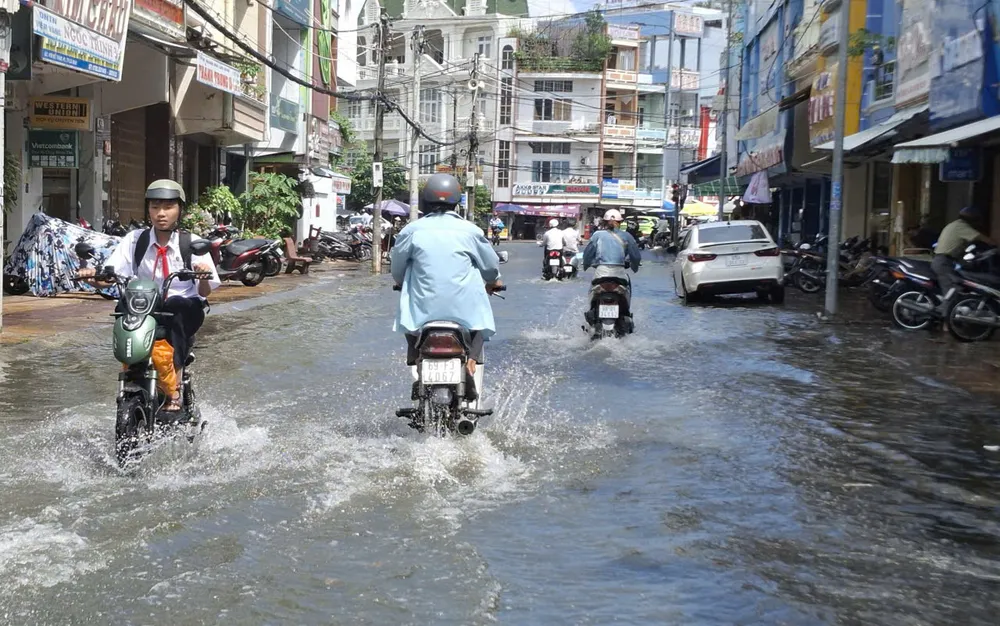
On the same day, Mr. Pham Thanh Ngai, Chairman of the People's Committee of Ca Mau province, directed the Department of Agriculture and Environment of the province and related units to review and inspect the system of irrigation works, dykes, embankments, and saltwater prevention sluices, and identify weak points for proactive reinforcement and repair.
Along with that, propagate and guide people to protect crops, livestock, aquaculture and implement policies to support production recovery. Strengthen inspection and supervision of the area; guide people to reinforce embankments, drain water, protect rice, crops and aquaculture.
In addition, proactively visit, support, and mobilize forces to help people overcome damage; promptly and effectively use resources to overcome the consequences of natural disasters according to regulations.
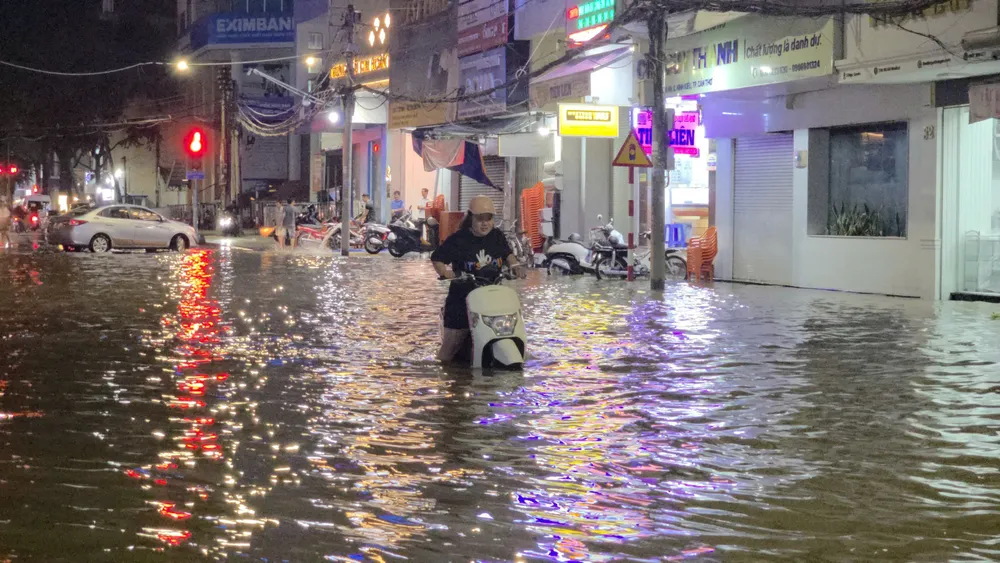
According to actual records, on October 24, many roads and some areas in Can Tho City continued to be heavily flooded.
Faced with this situation, the Department of Education and Training of Can Tho City has allowed schools in heavily flooded areas to proactively decide whether to let students take time off from school, adjust school start times later in the morning and close school earlier in the afternoon to "avoid" high tides.
The Can Tho City Department of Education also reminded schools to increase propaganda and remind parents to ensure students go to school safely and prevent accidents when water floods the school yard...
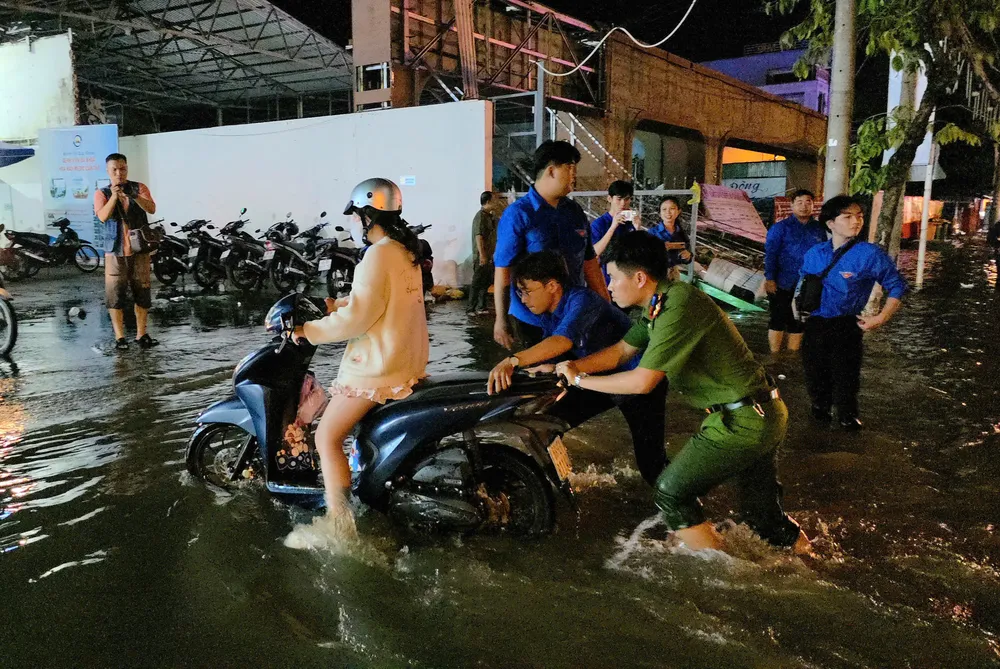
Can Tho City in recent days recorded the highest tide level ever, at 2.33m.
This is also a rare occasion when the Mekong Delta is facing three factors at the same time that cause water levels to rise: main-season floodwaters, prolonged heavy rains combined with high tides causing severe flooding in some areas downstream.
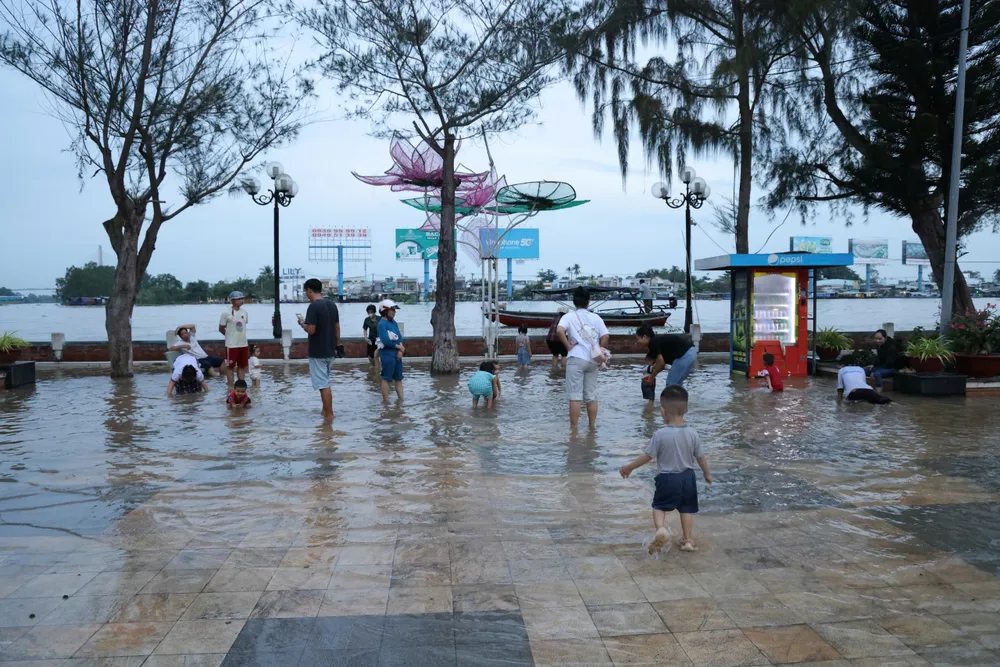
MSc. Nguyen Huu Thien, an independent ecological research expert in the Mekong Delta, said that in addition to rising sea levels, the more serious cause of severe flooding in many places is that the entire Mekong Delta is subsiding at a rate 3-10 times faster than the rate of rising sea levels, mainly due to excessive exploitation of groundwater.
However, the most decisive thing is that humans have taken away the space for water to spread.
The floodwaters from the upstream are blocked by the closed dikes for three-crop rice cultivation in An Giang and Dong Thap. Meanwhile, the tidal water from the sea is also blocked by the coastal dikes and sluices in the river branches. Both the Tien and Hau rivers have no space to spread, so they are compressed and rise in the middle of the delta, turning urban areas and traffic routes into the only "open spaces" for flooding.
Source: https://www.sggp.org.vn/dbscl-lu-ket-hop-trieu-cuong-gay-lo-de-ngap-nang-nhieu-noi-post819737.html



![[Photo] Prime Minister Pham Minh Chinh receives United Nations Secretary-General Antonio Guterres](https://vphoto.vietnam.vn/thumb/1200x675/vietnam/resource/IMAGE/2025/10/25/1761390212729_dsc-1484-jpg.webp)


![[Photo] General Secretary To Lam meets with General Secretary and President of Laos Thongloun Sisoulith](https://vphoto.vietnam.vn/thumb/1200x675/vietnam/resource/IMAGE/2025/10/25/1761380913135_a1-bnd-4751-1374-7632-jpg.webp)






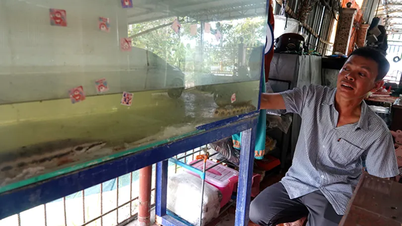

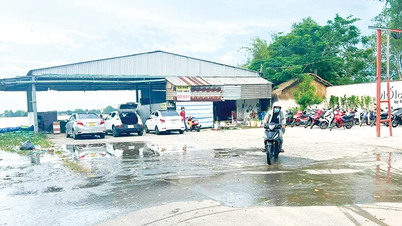




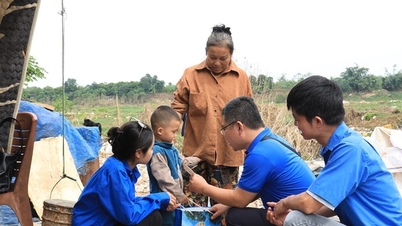




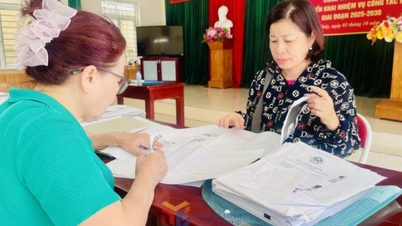

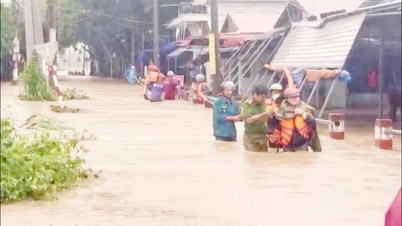




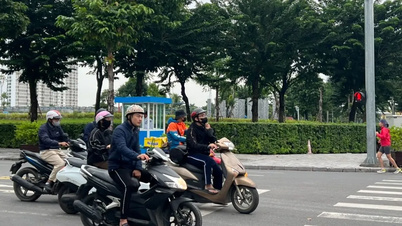

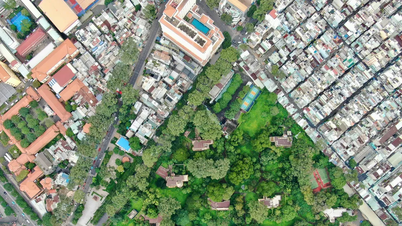

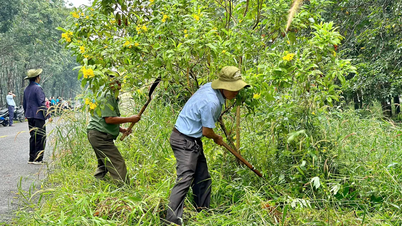

![[Photo] President Luong Cuong and United Nations Secretary-General Antonio Guterres chaired the signing ceremony of the Hanoi Convention.](https://vphoto.vietnam.vn/thumb/1200x675/vietnam/resource/IMAGE/2025/10/25/1761370409249_ndo_br_1-1794-jpg.webp)
![[Photo] President Luong Cuong receives heads of delegations attending the signing ceremony of the Hanoi Convention](https://vphoto.vietnam.vn/thumb/1200x675/vietnam/resource/IMAGE/2025/10/25/1761377309951_ndo_br_1-7006-jpg.webp)





































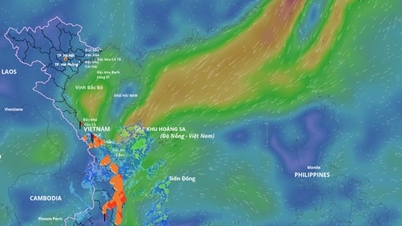

















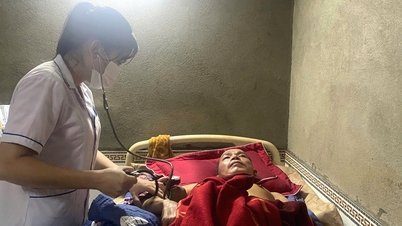

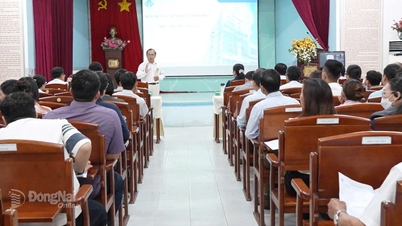
















Comment (0)